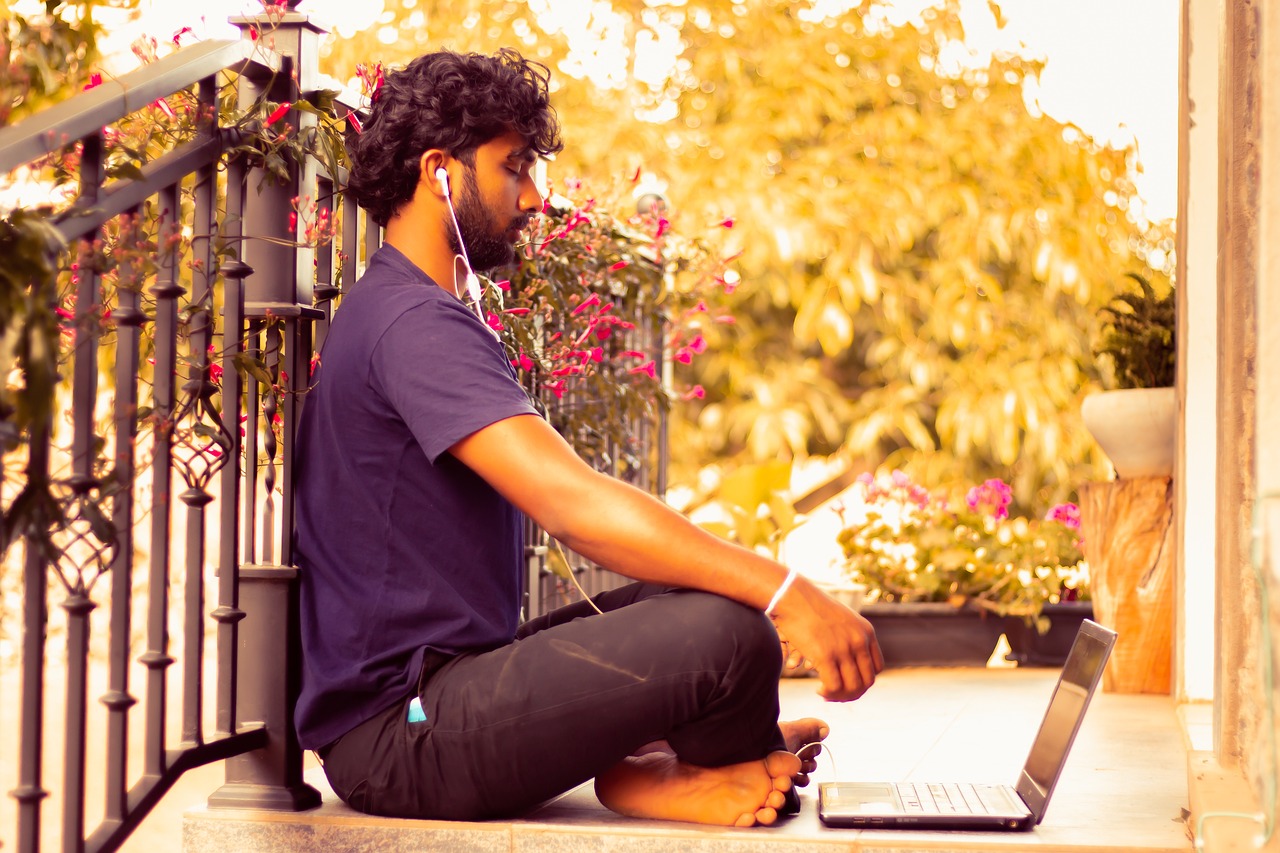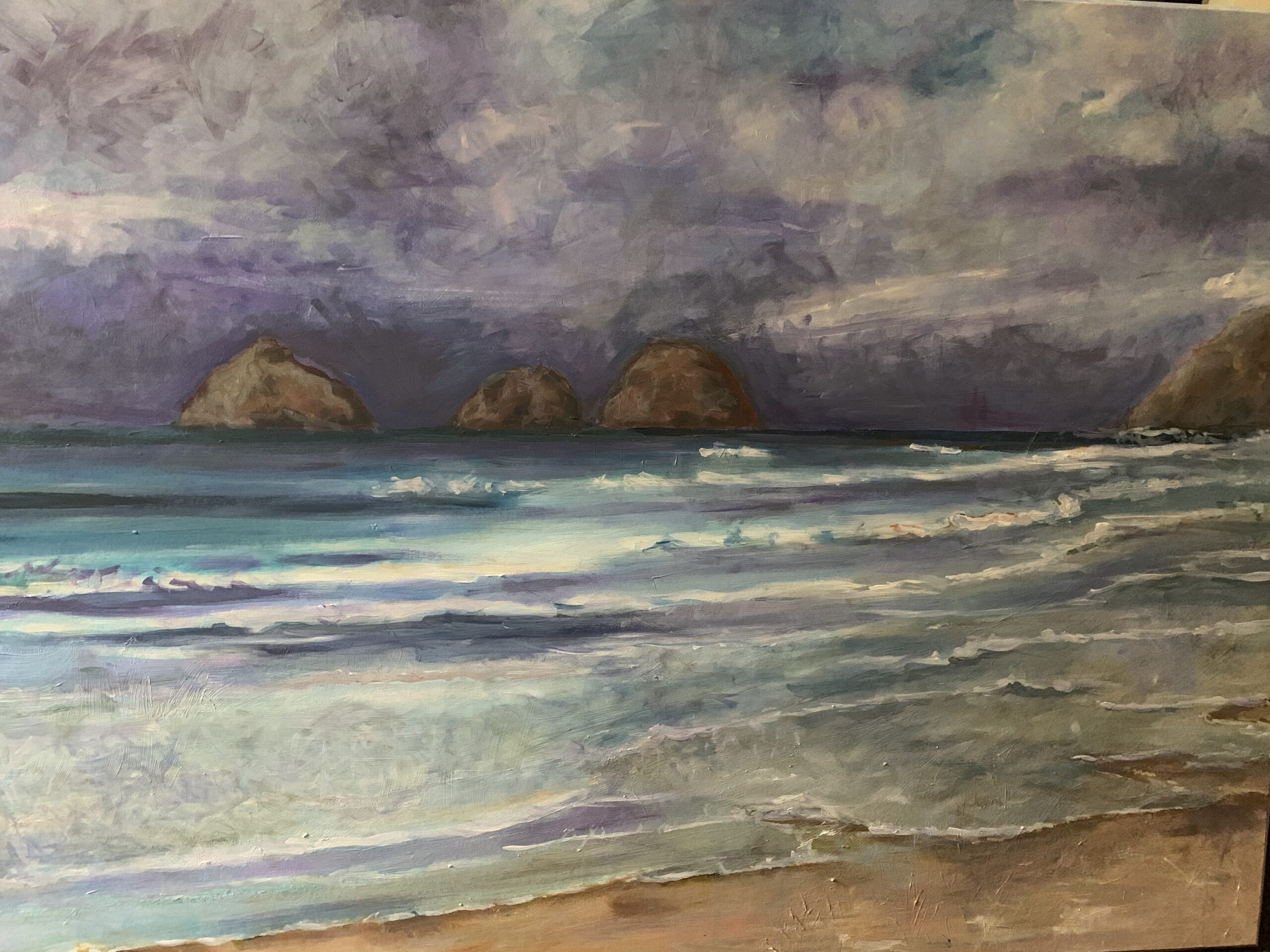Many people struggle with self-image issues. They may be overly influenced by sometimes impossible and unrealistice societal standards of beauty and thus find themselves wanting. They may grapple with the effects of illness or trauma—physical, mental, emotional—that cause alterations in self-image perception.These alterations may be due to something they are born with, something that is acquired, or the effects of medical treatments such as chemotherapy. These are only a few examples.
These two meditations can be used to help us heal from and overcome negative self-imagery. One focuses on the body and the other on the face. They are based in two Jewish concepts: 1) The notion that, having been created in the Divine image, each human being has inherent and infinite value, “For in God’s image did God make humanity” (Pirkei Avot 3:14), and 2) The concept of the human body as a house for the soul. Rabbi Joseph Meszler asks: “Would we act differently if we viewed our bodies as sanctuaries for God?… Would we be able to stop and stand in awe of ourselves and what it means to be alive?” (Meszler, p. 40).
The meditations invite us to stop and stand in awe of ourselves. They invite us to see our faces as reflections of the divine image, as holders of divine light. They invite us to envision our bodies as temples housing our souls. They invite us to view ourselves as sacred bodies of light, as vessels of holiness, as sanctuaries for God. When we perceive of ourselves in this way, it becomes very difficult to sustain a negative self-image.
Seven Candles of the Soul
Rebbe Nachman said: “My soul perceives your light. Let my body discern it too.” This meditation was inspired by a teaching of Rebbe Nachman of Breslov in which he envisions the human head and face as a seven-branched menorah. The seven candles are the openings or apertures of the head – two ears, two eyes, two nostrils, one mouth. The Rebbe taught that our task is to sanctify these apertures and make them into vessels of holiness. It is hard to maintain a negative self-image about your appearance when you view your face as a vessel of holiness. (This meditation can also be used to reflect on the following passages from the Tanakh: Parashat Beha’alotecha (B’midbar 8:1–12:16), Haftarat Beha’alotecha (Zechariah 2:14–4:7), Parashat Terumah (B’midbar 25:1–27:19), Parashat Emor (Vayikra 21:1–24:23). All of these passages have references to the menorah.)
Sit quietly. Relax. Close your eyes. Take a few deep breaths, inhaling and exhaling slowly. As you inhale, imagine that you are breathing in waves of healing energy. Feel these waves flow through your entire body—like an ocean of healing light. As you exhale, envision any negative energy—any pain, tension, stress, fatigue—being released from your body, carried away on the soft wind of your breath—carried away on angel wings. With every breath, feel the narrow places within you opening, expanding, becoming filled with waves of deep relaxation and healing energy. Feel this happening in your feet, your legs, your hips, your hands, your arms, your shoulders—in the core of your body—your pelvis, your abdomen, your spine, your chest—in your neck, your head, your face.
See your body as a miracle, “awesomely, wondrously made” (Psalm 139:14), a sacred vessel, a container for the light of God. The ancient Temple held a seven-branched menorah. Imagine you are in that Temple. Visualize the menorah with seven lit candles. Notice the shape and color of each of the seven candles. Notice the color, shape, and movement of the candle flames. Note how they dance and shimmer. Feel the warmth and light that the flames emit—soft, gentle, soothing. Note the many colors contained in each flame. Now envision a little rainbow, a symbol of hope and healing, in each flame.
Now visualize your face as a menorah. See the seven openings in your face and head—your two ears, your two eyes, your two nostrils, and your mouth as candles of the menorah. Envision ribbons of light from each of the seven candles flowing into these openings. One by one, these openings become filled with light. See your head and face aglow with this light. These are the Seven Candles of the Soul. Now feel these radiant lights, these Seven Candles of the Soul, flowing inward from your head and face, extending throughout your entire body, flowing into every cell, into every atom of every cell. Now feel these radiant lights, these Seven Candles of the Soul, flowing inward from your head and face, extending throughout your entire body, flowing into every cell, into every atom of every cell, dancing with your soul. Now envision microscopic menorahs of light forming within every cell, radiating light through your entire body. Envision your whole body as a glowing Menorah of Healing Light.
“The human soul is the candle of God.” See these flames, these Seven Candles of the Soul, as part of a greater flame, the Infinite Flame that is God. See yourself as a candle of God. Envision these Seven Candles of the Soul burning within you, dancing with your soul. The flames can never die. They are always present even when the candles are extinguished. Even in the darkest night, the flames still shine. Even in the darkest night, the flames still dance between heaven and earth. Even in the darkest night, the pure light still burns within your soul.
Hold on to these images as you now become aware once more of your breath and of the boundaries of your body. As you take a few deep breaths, become aware of the gentle rise and fall of your chest. Become aware once more of your physical presence. Then—whenever you are ready—slowly, gently—open your eyes.
Temple of the Body, Temple of the Soul
Parashat Terumah (B’midbar 25:1-27:19) contains God’s instructions for the building of the mishkan and the seven-branched menorah (B’midbar 25:31-26:14). This meditation invites each of us to view our body as a mishkan, as a house for your soul, as a sanctuary for God.
Sit quietly. Relax. Close your eyes. Take a few deep breaths, inhaling and exhaling slowly. As you inhale, imagine that you are breathing in waves of healing energy. Feel these waves flow through your entire body—like an ocean of healing light. As you exhale, envision any negative energy—any pain, tension, stress, fatigue—being released from your body, carried away on the soft wind of your breath—carried away on angel wings. With every breath, feel the narrow places within you opening, expanding, becoming filled with waves of deep relaxation and healing energy. Feel this happening in your feet, your legs, your hips, your hands, your arms, your shoulders—in the core of your body—your pelvis, your abdomen, your spine, your chest—in your neck, your head, your face.
God said: “Build me a sanctuary and I will dwell among you” (Shemot 25:8–9). And the people built a mishkan, a portable sanctuary, and they carried it with them wherever they went in their desert journey. And the Shekhinah hovered above the mishkan throughout the journey.
Take a few deep breaths and imagine you are living in those times, journeying with the ancestors. Focus your attention on this mishkan of ancient times. Imagine what it looked like. Imagine the Shekhinah, the Divine Presence, hovering above the mishkan, guiding you on your journey.
Now envision your body as a mishkan, a sanctuary, a temple. Note how your skin forms the walls of your body temple—your bones and muscles the supporting structures. Your heart and lungs, your vital organs, comprise the sacred inner sanctuary, the Holy of Holies. Know, sense, and feel your body temple to be a sacred place, a place of holiness, a dwelling place for the Holy One.
Now envision a beautiful flower above your head. Imagine its petals slowly, gently opening to reveal an inner light. Note the color of this light. Feel this light flow gently into your head and down into the temple of your body. It is warm and soothing, like a cleansing waterfall.
Now envision the openings in your head—your eyes, ears, nostrils, and mouth—as windows in your body temple. These are the windows of your soul. Envision multi-colored lights streaming into these windows of your soul—red, orange, yellow, green, blue, indigo, purple. See and feel these colors streaming through you and around you—filling your body temple with light, illuminating you from every direction. Now envision these lights converging to form a rainbow, a symbol of hope and healing. Envision your entire body wrapped in a glowing robe of rainbow light. Envision every cell aglow with this light, dancing with the light.
Know that the place of this Divine light is within you. This is the temple of your body. This is the temple of your soul. Know that this sacred place is a part of you. Know that this inner sanctuary of light and healing is always there for you, whenever you are in need of it. Feel, sense, and know that the Source of Divine Light is always there for you.
Hold on to these images as you now become aware once more of your breath and of the boundaries of your body. As you take a few deep breaths, become aware of the gentle rise and fall of your chest. Become aware once more of your physical presence. Then—whenever you are ready—slowly, gently—open your eyes.
References
JPS Tanakh (1999). Philadelphia: Jewish Publication Society.
Nachman of Breslov. (1999). The Gentle Weapon: Prayers for Everyday and Not-So-Everyday Moments. Adapted by: Mykhoff, M., and Mizrahi, S.C., together with the Breslov Research Institute. Woodstock, VT: Jewish Lights.
Nachman of Breslov. (1998). “The Menorah of Seven Lamps.” (pp. 285–290). In: Anatomy of the Soul. Adapted by: Kramer, C., and Sutton, A. New York: Breslov Research Institute.
Meszler, J. B. (2010). Facing Illness Finding God. Woodstock, VT: Jewish Lights.











